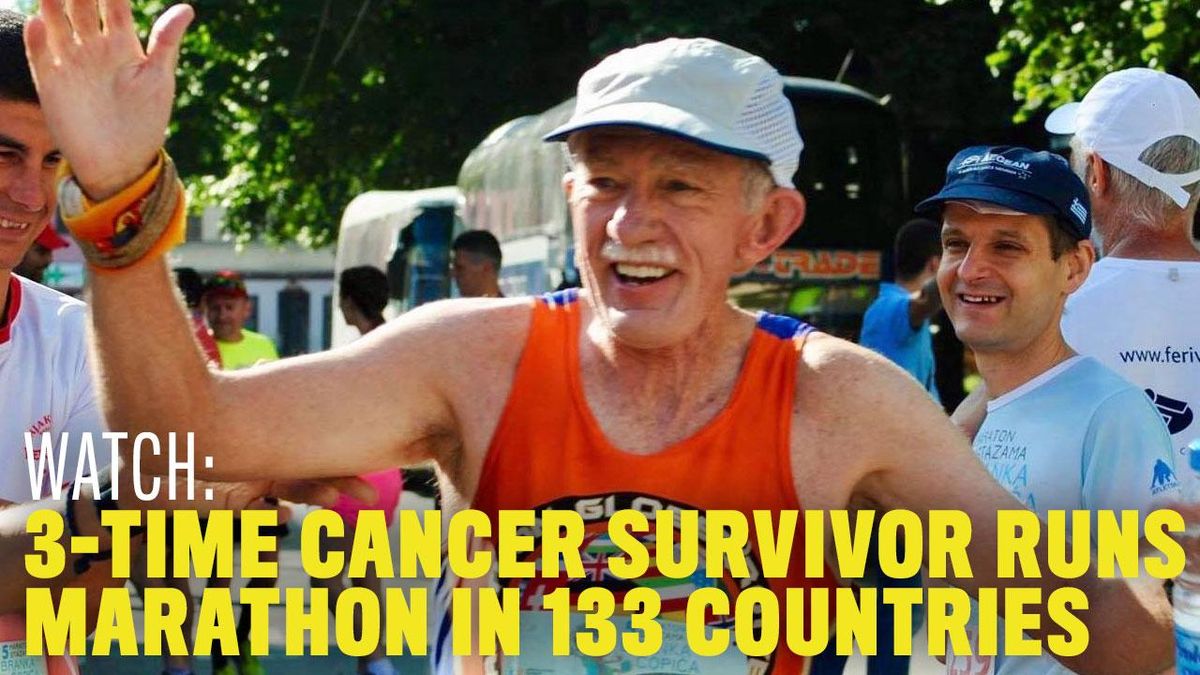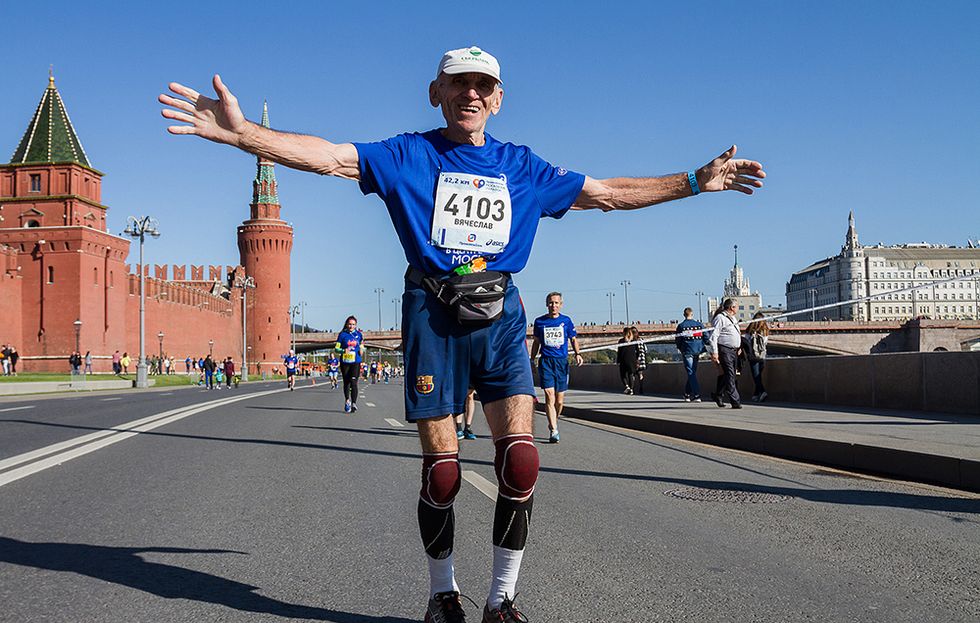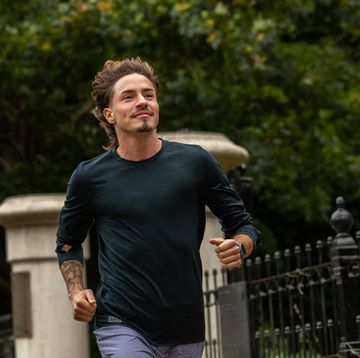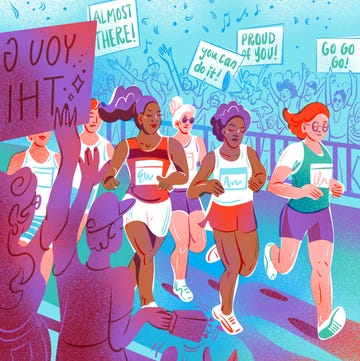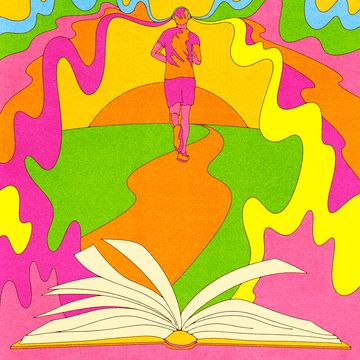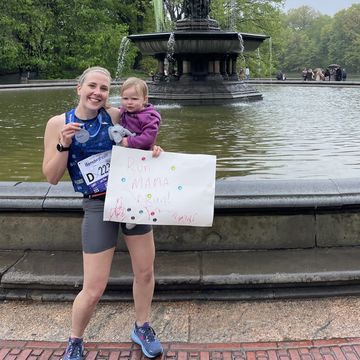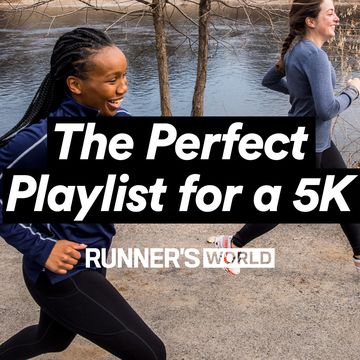On a bright and sunny Sunday in September—one of the few months of pleasant weather in Moscow—I woke up in a completely new-to-me time zone, ate a banana and the peanut butter that I’d smuggled in to Russia (just in case it was hard to find here) and I set off to run the Moscow Marathon.
I’d never run a marathon before, and I’d never been to Russia before, but when my job (at Rodale’s international division) offered me the the opportunity to do both, I couldn’t say no. In the course of four days, I experienced not only an incredible city but a running culture as new and different to me as the time zone. Here’s what I learned:
My preconceived ideas about Russian runners’ prerace fuel was something that involved beets and lots of potatoes, but after talking to a couple of elite runners at the expo, I learned that they simply prefer the standard bowl of pasta. Maybe we’re not so different after all.
RELATED: 7 Things That Happened When I Ate Beets for Two Weeks
Moscow is the least pedestrian-friendly city I’ve ever visited. In order to cross most major intersections, pedestrians have to use underground tunnels connected to metro stations. But on race day, Moscow's streets opened up to me (and 12,000 other runners) welcoming me to a place that I never thought I’d have the chance to visit, let alone run through.
On the train, headed to the start line at Luzhniki Stadium, in my technical shirt and running tights, I was struck by the number of people I saw holding race bags but wearing street clothes, like jeans.
Then I saw the “changing tents” (pictured above, behind me) at the start area, and, after asking around, I learned that many Russians consider it ill-mannered to wear sportswear in public. While running is more popular than ever in Russia, athleisure is not yet a trend.
RW IN YOUR INBOX: Have the latest news, advice, and inspiration sent to you every day with our .
The first two hours passed by quickly due to the amazing sight-seeing and people-watching. Runners wearing basketball shorts and old-school loose track suits were everywhere—Russians seem less concerned about style and more concerned about comfort. I noticed fewer people wearing headphones than in U.S. races as well. Most races frown on headphones (as they reduce situational awareness) but it was surprising to see so many people heed the race rules—or perhaps people in Russia just don’t like running with music.
I was also one of only five percent of international participants. Although runners from more than 70 countries participated, I felt like the only foreigner. It was isolating to be unable to understand the fans, volunteers, pacers and other runners. (I will now appreciate the encouraging words of English-speaking pacers more than ever before!)
Watch: Brent Weigner sets the record for marathons run in most countries.
Noah Bohnen, an American expat and principal at The Anglo-American School of Moscow, ran his third Moscow Marathon this year and said the race has improved significantly. His first Moscow Marathon consisted of running up and down the river four times and stopping for tea because the organization ran out of water.
The course has since developed to expose most of the city’s iconic sights. There are more spectators than ever before, as well as things you’d find at most big-city races: musicians, marching bands, corporate cheerleaders and plenty of fluid stations serving bottled water.
According to Bohnen, the very best people in Moscow participate in the races. “They are happy, smiley, open to foreigners and exhibit the positive spirit of distance runners,” he said.
Vladimir Voloshin, head of pacemakers at the Moscow Marathon and co-founder of the IronStar Triathlon, said running is a new means of socializing in Russia. He travels to other cities in Russia, and he is pleasantly surprised by the dozens of runners who now show up to join him on runs—five years ago, it was uncommon to see people running in Moscow’s parks.
Here’s how the race went:
As I walked toward the start line of the Moscow Marathon with the rest of the runners in my corral, I thought about my 10-week training period, 10-hour flight and difficulties getting a visa—a Russian consulate and two annexes closed in the U.S. while the visa center held my passport—all of which led me to this one moment: the start of my first marathon. I crossed the starting line and started my Garmin. My only thought was that there’s simply no turning back now.
The course started along the Moskva River exposing a view of Moscow City, which contains Europe’s tallest building, the Mercury City Tower. I passed four of Moscow’s “Seven Sisters,” a set of skyscrapers spread throughout the city designed in Stalinist architectural style.
As we ran, we got a beautiful view of the distinctive, colorful onion domes of St. Basil’s Cathedral and the Kremlin at two different points in the race. The first time I passed both—right around the 12-mile mark, I couldn’t stop snapping photos and taking (unsuccessful) selfies. This was my runner’s high.
My toughest moments during the race were between miles 14 and 19. There were fewer landmarks to serve as distractions and several challenging hills that slowed me down. Crowd support was particularly scarce during those miles.
I hit a point where my stomach was hurting, my feet were cramping and my legs were just in utter pain. This was the point where the whole experience felt very overwhelming, and running my first marathon so far from home was magnified.
I did have one fan on the sidelines: My colleague Veronika Taylor had traveled to Moscow with me. She mastered the metro map and cheered from different points throughout the race. She was there at the perfect moments, one of which was the 20-mile mark right before a huge hill as I ran past the renowned Bolshoi Theater.
Reflecting on where I struggled most during the race, I realize how essential it is to have people I’m close with cheering me on, and how critical camaraderie is with other runners during a race. There were times, however, when language barriers faded and I bonded with the other runners through the adrenaline rush and excitement that we shared.
There was a moment when we ran through a tunnel underneath a bridge and a couple of runners started cheering. Before I knew it, a group of about 100 of us were cheering as we passed through the tunnel, getting all fired up by the echoes. At another point, a few of us started laughing as a girl handed her empty gel packet to a random security guard (who was not volunteering at the race) because she didn’t want to litter.
Nevertheless, the last six miles felt longer than the 20 miles leading up to it, and the finish line looked like it was reversing as it came into view. I no longer noticed any landmarks around me. My only thought was that I could not get on my flight home without finishing this race.
I crossed the finish line at 4:24, a personal best and a personal worst both at the same time. A woman hung a medal around my neck. I stopped for a moment and just looked at her hoping for some kind of comfort. I’m guessing my face revealed the pain I felt, because she embraced me with a long hug saying what sounded like congratulatory words that I wish I could’ve understood. It was this special, victorious moment with a complete stranger that I will never forget. My post-race feast consisted of a celebratory shot of vodka (what else?) at our hotel, followed by rigatoni and a lamb T-bone. And it couldn’t have been more perfect.

